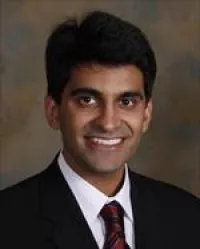In an era where smartphones are used to transmit billions of messages between parents, friends, and colleagues, a group of physicians at UCSF are re-envisioning care communication to transform the way providers and patients communicate within the hospital.
New smartphone and Internet-based apps, integrated with electronic health record (EHR) systems, have the potential to link patients with care team messages, and shorten the time for doctors to order treatments.
Raman Khanna, MD MAS, a UCSF Health Informatics physician lead, published this vision in JAMA with two other UCSF physicians. Khanna and colleagues envision moving beyond typical smartphone text messages. Messages could, for instance, be linked to individual patients, allowing one to view all of the electronic conversations for a particular patient.
These tools can capture live conversations between healthcare team members, allowing one to find the latest preparations for in-hospital treatments and post-discharge care. And, these tools can enable efficient one-click ordering and referrals.
"It is time to reimagine electronic clinical communication...that supports a team-based culture of care through more effective, interoperable, and intelligent collaboration," writes Khanna and colleagues.
Khanna, along with Robert Wachter, MD, Chair of UCSF Department of Medicine, and Michael Blum, MD, Director of the UCSF Center for Digital Health Innovation, have further extended their vision with CareWeb, an Internet- and smartphone-enabled app that allows healthcare providers within UCSF Health to communicate. The secure, encrypted app combines an interface similar to Facebook and Twitter's news feed, with patient-centric features.
In an era of ubiquitous smartphones and social networks, it is a good time to eliminate the pager but also to think through the paging workflow and how it can change to improve communication overall.
Raman Khanna, MD MAS
Associate Professor at UCSF Hospital Medicine, Physician Lead for Inpatient Informatics at UCSF Health
Interpreting text paging communication for clues
To advocate for the need to transform communication, Khanna collaborated with UCSF researcher Adam Luxenberg and colleagues to study current communication methods.
Messages between healthcare providers communicated amidst typical pager-driven text messages can have widely varying language and messages structures, according to the study researchers, in collaboration with Oregon Health & Science University.
A lack of standardization and a wide variety of urgency amongst such messages may lead to communication gaps. This can have implications on patient safety and quality, since inpatient healthcare providers predominantly communicate through pager-driven text messages on dedicated pager devices.
The study authors sampled 575 pager-driven text messages in an internal medicine service at an academic tertiary care hospital. These messages were analyzed and found to have communication style practices that had differing styles of communicating urgency, along with uncommon abbreviations, odd syntax, and missing words.
The results were published in the August 2017 issue of JAMA Internal Medicine. Authors of the study include Adam Luxenberg, Raman Khanna, and Urmimala Sarkar from UCSF, along with Brian Chan of Oregon Health & Science University. The study was funded by UCSF RAPtr Pathways Research Fellowship, UCSF Primary Care Research Fellowship, and the United States Agency for Healthcare Research and Quality.
Transforming practice patterns
Pagers are just one element amongst the complex web of EHR messaging, EHR progress notes, secure e-mails, patient portals to access healthcare data, care team handoffs, and fax machines. But the ultimate goal of transforming communication is to make healthcare more straightforward — streamlining the way doctors, nurses, and other providers provide care, improve safety, and, ultimately, improve quality.
This transformation is taking place with the help of clinical informatics. Clinical informatics is a relatively new healthcare field that combines the disciplines of computer science, data science, business administration, medicine, and nursing.
UCSF's Health Informatics team includes healthcare leaders to improve and advance the way providers and partners deliver care, through information technologies.
About UCSF Health Informatics
UCSF Health Informatics provides clinical leadership for the electronic health record (EHR) to empower patients, families, and our healthcare providers. The group facilitates the implementation of new clinical content, perform studies with healthcare data, and design, integrate, and deploy the EHR. These information technologies advance the delivery of healthcare. APeX — Advancing Patient-Centered Excellence — is UCSF Health's version of the Epic EHR.
About UCSF
UC San Francisco (UCSF) is a leading university dedicated to promoting health worldwide through advanced biomedical research, graduate-level education in the life sciences and health professions, and excellence in patient care. It includes top ranked graduate schools of dentistry, medicine, nursing and pharmacy; a graduate division with nationally renowned programs in basic, biomedical, transitional and population sciences; and a preeminent biomedical research enterprise. It also includes UCSF Health, which comprises three top-ranked hospitals, UCSF Medical Center and UCSF Benioff Children's Hospitals in San Francisco and Oakland, and other partner and affiliated hospitals and healthcare providers throughout the Bay Area.
Photo: StockUnlimited


